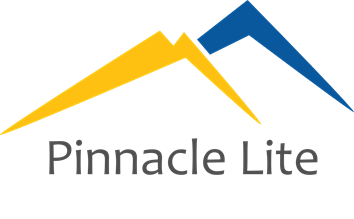The Excitech Toolkit features a unique set of tools, apps and utilities that focus on improving efficiency for all users and delivering a more positive all-round experience. Revit and Civil 3D users will quickly identify numerous tools that help address everyday tasks that currently prove cumbersome or time-consuming.
There’s an enormous amount of depth and content that will prove invaluable to all our customers and whilst the Excitech Toolkit is currently only available for Revit and Civil 3D, more platforms will be supported soon. Watch this space.

Excitech Toolkit for Revit
This jam-packed utility for Revit features a range of highly sort-after capability and functionality users have been after for years. Revit users will immediately benefit from tools that help with BIM Management, content administration, view and sheet creation, annotation and model/data modification plus links with excel, to name a few.
Featured Tools:
- BIM Query: Integrates Excel functionality directly into Revit for scheduling and data entry, and will be compelling to most users as an everyday means of managing, sorting and structuring data or producing complex schedules. It has a slick import and export data process and even supports advanced formulas without needing to open Excel.
- Analysis Tools: These tools enable users to review objects, such as floors, to determine their location and attributes like ‘thickness’ within the parameters, allowing these attributes to be scheduled. This can even be done over multiple elements at once. Being able to schedule these types of attributes is a common request from Revit users – so should be welcomed.
- Renumber Tools: From Mark parameters to Rooms to Grids to Space to Area and even Sheet views. The renumbering tool will be a welcome addition over in built functionality, especially numbering doors by rooms.
- QA – Model Review: This set of tools gives the user the opportunity to check their model to assure the quality of a project. The set also includes Toggle Transparency and QA/QC Tags tools.
- Room Views: Creates floorplans and elevations of a selected room or rooms, and includes easy options to configure naming conventions, and is a productive addition for users that produce Room Data Sheets.
- Reinforcement Visibility: There is a useful tool to easily control concrete reinforcement visibility that will appeal to our structural customers.
BIM Managers will also enjoy the Content Admin Kit, Clean Up, Type Editors and Export Families tools, which afford a greater level of control over the inbuilt tools.
“there are certainly tools here that I would use on a regular basis”.
Excitech Toolkit for Civil 3D
Civil 3D users will enjoy functionality that has long been on the development wish list to help with creating and managing sections and alignments, grading and corridors, pipe editing and geometry analysis and much more.
Featured Tools:
- Points – Station and Offset: Add chainage and offset from a road alignment to points in the model. This is actually very important for delivery of asset information in a highways project as chainage/offset is used as an alternative to co-ordinate location when delivering asset data (e.g. COBie). The data added is dynamic and can be used in scheduling and reporting.
- Corridor Section Editor: Is simpler to use than the Civil 3D function, producing the required result with some additional benefits. It enables the user to edit the road model by selecting a part in a section view (e.g. a road lane) and enables editing at that section location (e.g. change the road width) and across a distance range, including adding a transition before and after to allow a gradual change.
- Pipe Editor and Structure Editor: The Pipe Editor is frequently requested to edit a run of pipes, either in Plan or Long-section, setting the slope of the pipes, and the drop across a structure. Similarly, the Structure Editor allows the user to edit the structure properties, and the connected pipes at that structure, even allowing the user to swap the type of pipes used.
- Swap Multiple Parts: Allows the user to swap the type of part (pipe or structure) by picking a drainage run in the drawing.
- Level Service Network (Gully Pipe Connections): Currently a manual process in Civil 3D, this tool enables users to place gully pipe connections in a separate network, moving the pipes to connect to the main drainage network at the designated position.
- Create Pipe Depth Analysis: Calculate and report on the depth ranges of pipes at user-defined ranges. In the UK costing of drainage is based on the depth of excavation, so this is a great tool for Contractors to calculate costs based on the depth of the pipes.
- Visibility Manager: Being able to turn on and off Civil 3D objects as required from a single interface will benefit all Civil 3D users.
“I think it will be a definite winner with many Civil 3D users, particularly anyone designing highways and drainage on a regular basis. Finally, a good indicator – would I give up Ribbon space for these tools – yes, I’d like to keep them, please.”
Introducing: The all new Pinnacle Lite
Built from the popular browser-based e-learning platform Pinnacle Series, Pinnacle Lite is a scaled down version designed to support rapid user learning and adoption of the full suite of tools available in the Excitech Toolkit.
Pinnacle Lite contains all the learning content, videos and guides for the Excitech Toolkit in one central and easy to access environment making for a positive and efficient user experience. Users will be able to quickly search for and access tutorials on the fly, enrol on courses to develop core skills, add tutorials to their favourites, see their frequently accessed content and what content is trending across their organisation.
The Excitech Toolkit supported by Pinnacle Lite, reflects our aspiration to empower customers with a competitive advantage - enabling Symetri customers to achieve more, learn more and do more.


Author
Symetri





